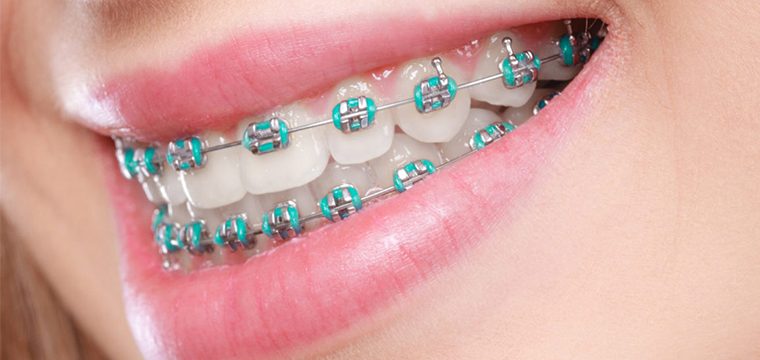Finding the Right Cumming Orthodontist for Your Braces and Aligners Requirements
Finding the Right Cumming Orthodontist for Your Braces and Aligners Requirements
Blog Article
Comprehensive Overview to Orthodontics Treatments for Correcting Oral Misalignments
Understanding the ins and outs of each procedure, including their mechanisms, advantages, and possible disadvantages, is critical in making notified decisions regarding one's orthodontic therapy. As we navigate via the detailed guide to orthodontic treatments for correcting dental imbalances, the complex details of each technique will certainly unravel, dropping light on the course toward a useful and unified dental placement.
Orthodontic Procedures Summary

Routine changes and monitoring are crucial parts of orthodontic treatment to ensure progression is on track and to make any required modifications along the means. By going through orthodontic treatments, clients can not just attain a straighter grin but also enhance their total dental wellness and feature.
Conventional Braces: Just How They Work
When thinking about orthodontic therapies for dental imbalances, traditional braces stand out as a tried and true method for remedying teeth placing. Conventional dental braces consist of brackets, wires, and bands that work together to use continual pressure on the teeth, slowly moving them into the preferred alignment.
One trick facet of just how conventional dental braces job is the procedure of bone improvement. As stress is related to the teeth with the dental braces, the bone bordering the teeth is reshaped to sustain the new tooth settings. This renovation is vital for the lasting security of the remedied positioning. People will require regular changes at the orthodontist's workplace to make sure the braces proceed to use the right pressure for reliable teeth movement.
Unnoticeable Aligners: Cons and pros
These clear, custom-made trays are virtually unnoticeable when worn, making them an enticing option for individuals seeking a more aesthetically pleasing orthodontic treatment. Individuals can remove the aligners before consuming or cleaning their teeth, reducing the danger of food obtaining stuck in the appliance and streamlining the cleaning procedure.

Surgical Orthodontic Options
Surgical interventions in orthodontics existing viable options for resolving complex oral imbalances that may not be successfully solved with traditional orthodontic therapies. While standard braces and invisible aligners can remedy numerous orthodontic issues, specific situations need medical intervention to achieve optimum results. Surgical orthodontic choices are typically recommended for extreme malocclusions, considerable jaw disparities, and instances where the underlying bone structure requires modification to achieve appropriate placement.
One common surgical orthodontic procedure is orthognathic surgical procedure, which includes repositioning the jaws to correct useful issues such as problem eating or speaking. This surgery is frequently carried out in cooperation with an orthodontist that helps align the teeth prior to and after the procedure. Read More Here Surgical orthodontics might additionally entail treatments to subject impacted teeth, eliminate excess gum tissue, or improve the jawbone to develop a more unified face account.
Prior to taking into consideration medical orthodontic alternatives, individuals undertake a detailed analysis to figure out the necessity and possible advantages of such treatments. cumming braces. While surgical procedure might seem overwhelming, it can dramatically improve both the feature and aesthetic appeals of the smile in cases where traditional orthodontic therapies fail
Retainers and Post-Treatment Care

Post-treatment care involves complying with the orthodontist's instructions carefully. This might consist of appropriate dental health techniques, attending follow-up visits, and using the retainers as prescribed. Failure to abide with post-treatment care instructions can lead to relapse, where the teeth gradually return towards their initial positions. Constant retainer wear, good dental hygiene, and normal oral check-ups are necessary for preserving the results accomplished through orthodontic surgical procedure and making sure the long-lasting stability of the fixed oral positioning.
Final Thought
In final thought, orthodontic procedures use numerous options for fixing dental misalignments. Surgical pop over here orthodontic options are offered for extra severe imbalances. On the whole, orthodontic procedures can efficiently enhance oral wellness and visual look.
As we navigate via the thorough overview to orthodontic procedures for remedying oral misalignments, the intricate details of each method will unravel, losing light on the path toward a unified and practical oral alignment. - cumming aligners
One of the most typical orthodontic treatments is the usage of dental braces, which consist of steel brackets and cords that use gentle pressure to gradually change teeth into the wanted position.When taking into consideration orthodontic therapies for oral imbalances, conventional braces stand out as a tried and true approach for fixing teeth placing. In addition, unseen aligners might not be suitable for complex orthodontic problems that call for more considerable teeth movement, as they are generally suggested for moderate to moderate situations. Retainers are tailor-made orthodontic gadgets created to hold teeth in their corrected positions after the completion of orthodontic therapy.
Report this page